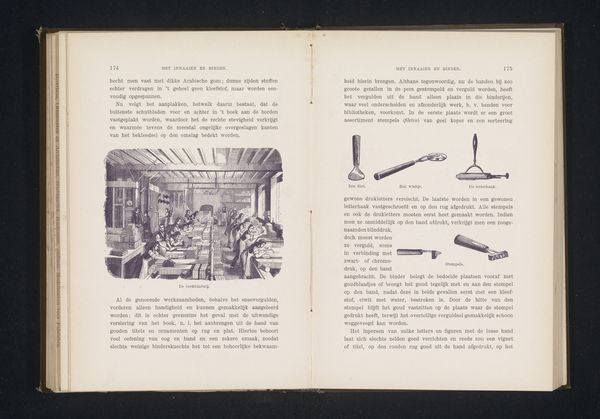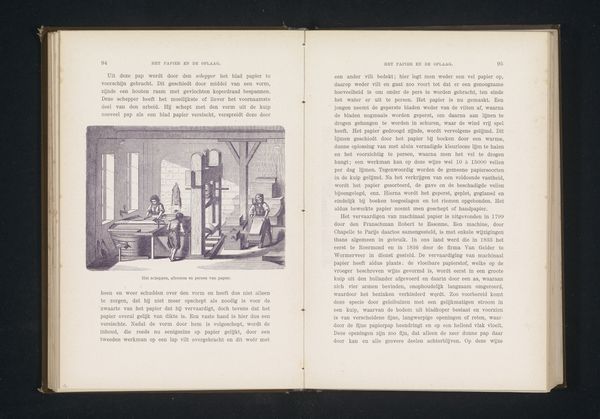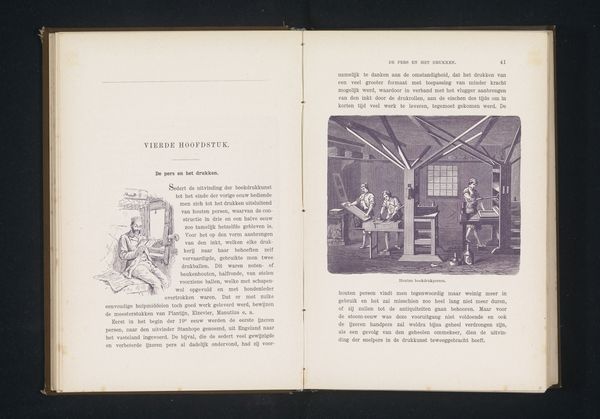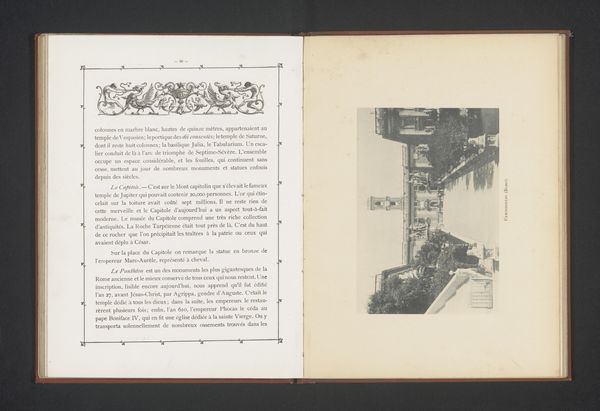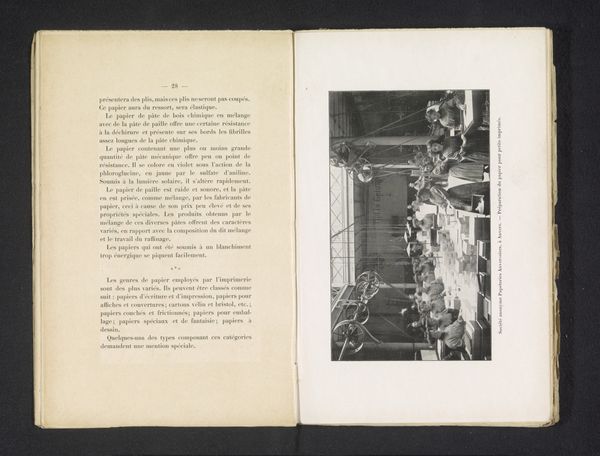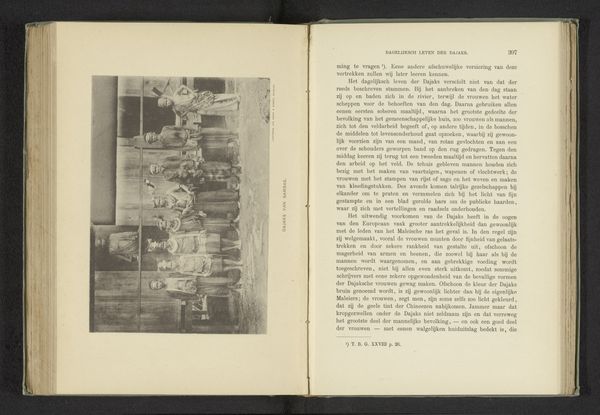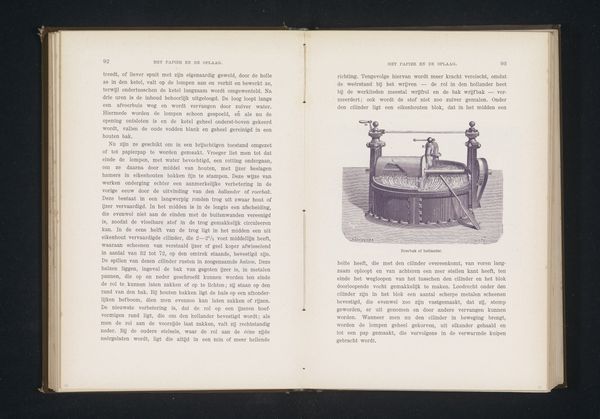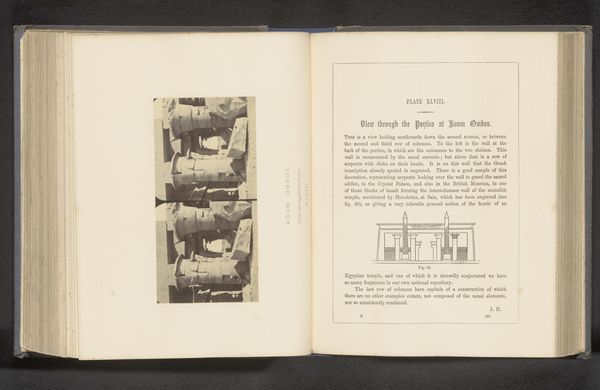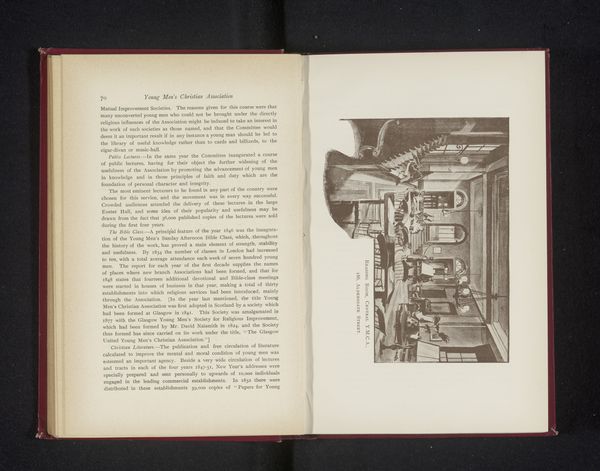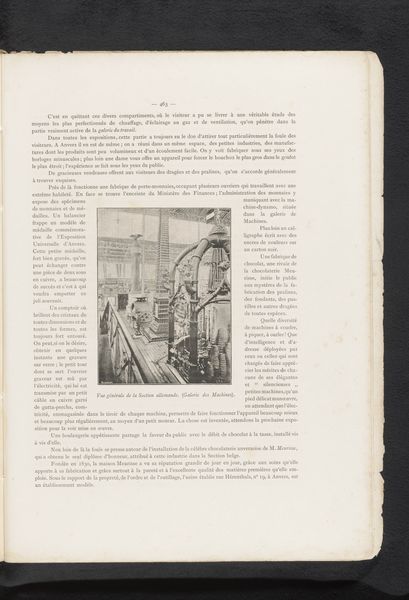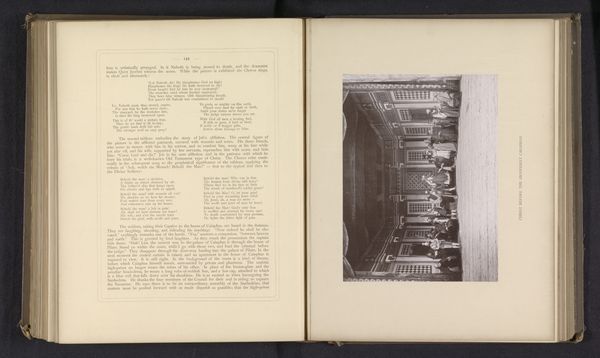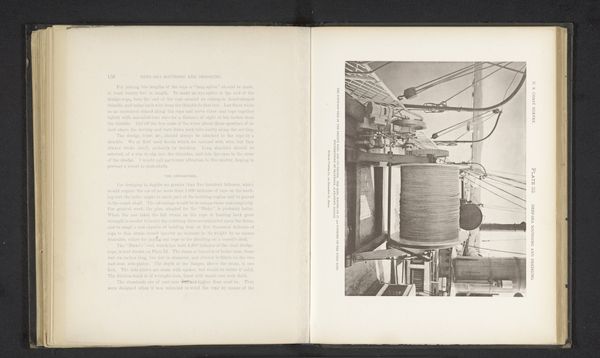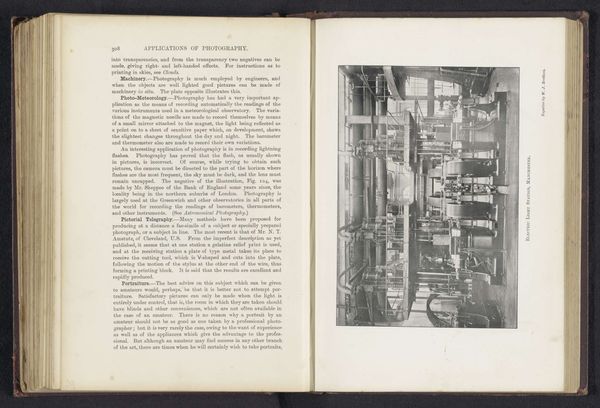
print, typography, engraving
# print
#
typography
#
genre-painting
#
history-painting
#
engraving
#
modernism
Dimensions: height 105 mm, width 123 mm
Copyright: Rijks Museum: Open Domain
Curator: This engraving, titled "Reproductie van een gravure van een lettergieterij", or "Reproduction of an engraving of a type foundry," dates back to before 1892. It's a fascinating peek into a world of early industrial typography, presented through the stark lines of a print. Editor: My first impression is one of industry, literally and figuratively. There's a stark contrast between the delicate lines of the engraving and the subject matter - the harsh realities of early industrial labor. The composition leads your eye across this vast workshop filled with laboring bodies. Curator: Exactly! We see here not just the machinery of printing, but also its social and historical context. The print depicts workers operating letter-foundry equipment. Look at the rows of figures meticulously engaged in their tasks, mass-producing letters. These became essential components in disseminating knowledge and shaping public discourse. It underscores how typography fueled the rise of modern print culture. Editor: It's striking how the engraver captures the scale of the factory floor, hinting at both the promise and alienation of mass production. The individual laborers appear somewhat dwarfed by their environment and machinery, which really gets you thinking about the shifting socio-economic landscapes of the late 19th century. It really captures a crucial turning point in history! Curator: Agreed. And if we focus on the visual symbolism, it reminds us of the human ingenuity required for these innovations. In its design, it reflects that moment when technological advancements reshaped not just production but our understanding of labor. Editor: Beyond the factory’s history, I think it invites us to examine the relationship between artistic representation and socio-economic forces. Engravings like this were not just neutral depictions; they participated in constructing ideas about progress, technology, and labor within a changing society. Curator: It highlights the significance of preserving images like this to promote broader social dialogue, cultural memory, and historical comprehension in visual format. Editor: This engraving offers more than just a historical document. It reveals cultural assumptions present when machinery first started permeating daily lives. I think we gain insight through understanding the technology but also human effort behind it all.
Comments
No comments
Be the first to comment and join the conversation on the ultimate creative platform.
